Cal-Mag for Cannabis Plants: How to Spot Deficiency and Use the Supplement Right
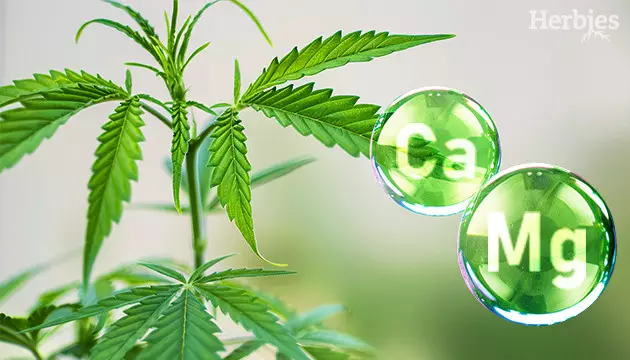
Calcium and magnesium hold a significant place among the key elements cannabis plants require for growth and health. They are involved in crucial life processes, so it is extremely important to maintain their optimal levels from seed germination to harvest. But why do they always come as a pair in supplements, and what exactly does each of them do for your plants? Here, we explore their importance in detail, dive into how to properly add a cal-mag supplement to your weed plant’s diet, and when to stop.
The Importance of Cal-Mag for Cannabis Growth
When buying nutrients for your marijuana plants, you've probably noticed that calcium and magnesium are often combined in cal-mag supplements, and there are several reasons for that. Firstly, both of these secondary macronutrients help plants in mostly the same way, so their combined use leads to a synergistic effect. Secondly, growers can quickly run into trouble applying them separately in the wrong proportions.
Adding too much magnesium or calcium can interfere with the optimal absorption of both nutrients. Thus, excessive consumption of any of them individually can quickly lead to a deficiency. Cal-mag dietary supplements contain these nutrients in an ideal 3:1-4:1 ratio of calcium to magnesium, which eliminates the risk of excessive consumption of any of these elements.
Together, they enhance nutrient uptake, improve enzyme activation, and optimize overall plant growth. When used in tandem, they ensure a balanced nutrient profile, preventing deficiencies and promoting healthy, vigorous plants.
Calcium’s Role in Cannabis Plants
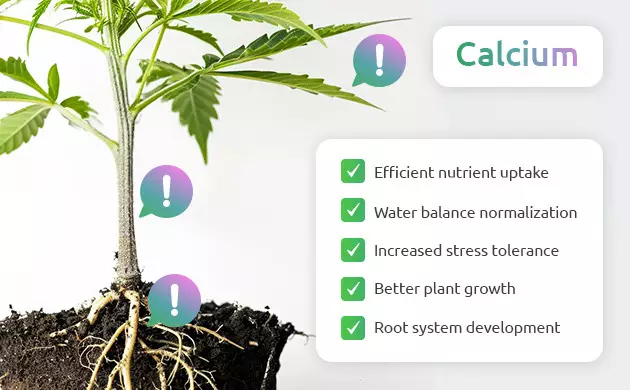
Calcium accelerates the breakdown of seed proteins, which leads to the faster emergence of seedlings. Calcium is also necessary for root development, and a significant amount of it is used to form root hairs. When it’s not sufficient, cannabis roots have difficulty absorbing nutrients, leading to stunted growth and poor plant health.
In addition, Ca helps in photosynthesis – it participates in the synthesis of chlorophyll and plays an important role in producing proteins that protect the plant from stress. An adequate amount of calcium in the soil increases the immunity of plants, enhances the water balance, and improves the absorption of nutrients, ensuring healthy growth.
Why Magnesium is Essential for Weed
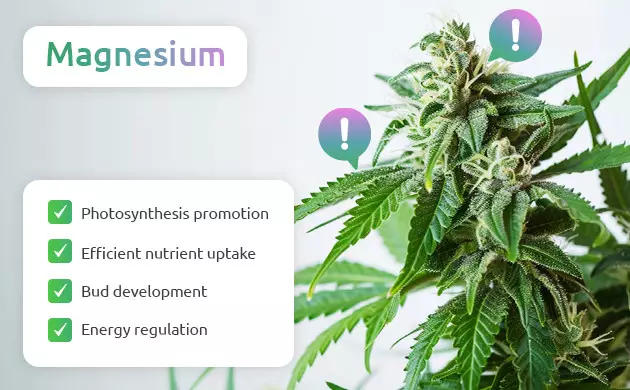
Magnesium plays a huge role in the cannabis plant’s metabolism and energy transfer. This macronutrient increases the mobility and absorption of phosphorus, which is crucial during the formation and maturation of flowers. Magnesium also helps in the accumulation of essential oils, terpenes, and cannabinoids in the buds, while also contributing to the plant's protection from adverse environmental conditions.
How Marijuana Plants Take in Calcium and Magnesium
Have you heard of cation exchange? That’s exactly how cannabis plants take in calcium and magnesium, and the key actors here are positively charged hydrogen ions that marijuana plants release into the soil. These easily attach to negatively charged particles in clay and organic matter, displacing the calcium and magnesium. The plants' roots then absorb these elements through diffusion. Once inside the plant, they travel through the plant's vascular system (the xylem), which facilitates the movement of water and nutrients. The latter are then distributed to different parts of the plant to support cellular functions.
Nonetheless, calcium and magnesium influence the plant's structure in slightly different ways. Magnesium is a mobile nutrient that can relocate from older parts of the plant to newer areas, particularly when its levels are insufficient. In contrast, calcium is an immobile nutrient that cannot be transported to new growth regions, resulting in deficiency symptoms in the tissues that are currently developing.
Symptoms of Cal-Mag Deficiency in Weed

As a grower, you want to make sure this awesome couple does its best for your plants so they can grow and thrive. To do so, you need to spot any potential deficiencies in cannabis early on. Keep in mind the signs of calcium and magnesium deficiencies below to catch the problems with cal-mag uptake before it’s too late for your plants.
Signs Your Cannabis is Low on Calcium
If your plant lacks calcium, a deterioration in plant health will soon be visible in the following signs:
- Slowed growth: The plant's overall growth slows down.
- Discoloration and deformation of leaves: Leaves may turn yellow or purple, unrelated to the variety’s genetics. This usually starts at the top of the plant and gradually moves downwards. Young leaves can also develop chlorotic spots and die quickly. New leaves don’t look healthy from the start and grow deformed – often, you can see them bent into a hook shape.
- Brittle stems: Your plant’s stems become brittle and may begin to rot from the inside.
- Poor nutrient absorption: The plant’s root system struggles to absorb nutrients, leading to a general nutrient deficiency. The plant appears to be drooping and withered.
- Impaired bud development: During flowering, calcium deficiency can slow or stop bud development, causing buds to appear wrinkled and twisted.
- Sensitivity to stress: Plants become more sensitive to watering and heat issues, as well as other stresses.
- Root system vulnerability: The root system becomes susceptible to pathogenic organisms, often resulting in root rot.
How to Tell if Your Plants Need More Magnesium
Without enough magnesium, plants will show slower growth and delayed bud development, which results in producing lower yields and seeds of poorer quality. Since magnesium can be reused by plants, deficiencies often start in older leaves and spread upwards.
When your plants need more magnesium, you can observe the following:
- Spotted necrosis: Leaves display uneven coloring; a lack of chlorophyll in the tissues leads to pale areas between green veins.
- Burned leaf tips: The edges of leaves might develop burns as the deficiency worsens.
- Deformed leaves: Leaves can become deformed if magnesium levels remain low.
- Chlorosis in young leaves: Without correction, young leaves may develop chlorosis, dry out, and fall off.
- Delayed flowering: Magnesium deficiency can delay flowering, which leads to small buds that lack vital active substances.
Tips for Using Cal-Mag Supplements Right
Now that you understand the importance of calcium and magnesium for your marijuana plants, be sure to avoid deficiencies that could jeopardize their health. If you’ve observed any signs of cal-mag deficiency, proper use of supplements can effectively correct these issues. But the key word here is ‘proper’.
Effective Use of Cal-Mag in Soil
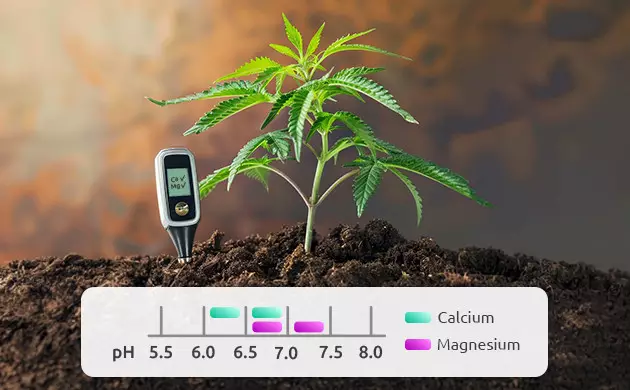
When using cal-mag in soil, start with a soil test to determine existing nutrient levels. Follow the recommended dosage on the supplement label, usually starting with a lower concentration and gradually increasing if necessary. Mix the supplement with water and apply it during regular watering schedules. Ensure the soil pH level is between 6.0 and 7.0, as calcium and magnesium are most readily available to plants within this range. Avoid over-application to prevent nutrient lockout and toxicity. Regularly monitor plant health and adjust the dosage as needed to maintain optimal nutrient levels.
Utilizing Cal-Mag in Hydroponic Systems
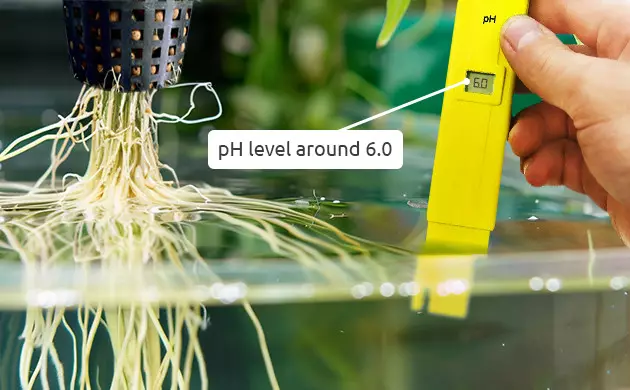
In hydroponic systems, cal-mag is added directly to the nutrient solution. Since hydroponic setups often lack natural sources of calcium and magnesium, supplementation is crucial. Begin with the manufacturer's recommended dosage, and adjust based on plant response and water quality. Hydroponic systems require careful monitoring of pH and electrical conductivity (EC) levels to ensure nutrient availability and prevent imbalances. Maintain a pH range of 5.5 to 6.5 for optimal nutrient uptake. Regularly test and adjust the nutrient solution to keep calcium and magnesium levels balanced, ensuring healthy growth and robust yields.
Fixing Cal-Mag Issues at Different Growth Stages
Knowing how to properly apply cal-mag is great, but it’s not enough to make sure it’ll work as it should. You also need to make sure you introduce it correctly at different stages of your plant’s growth.
Handling Cal-Mag Deficiency in the Veg Stage
During the vegetative stage, cannabis plants grow rapidly and require sufficient nutrients. A lack of calcium during this phase can slow down growth, weaken stems, and lead to the yellowing of leaves and the appearance of brown spots. To solve this problem, start by adding cal-mag supplements to your plant’s diet. Make sure that the pH of the soil is in the ideal range of 6.0-7.0 (or 5.5 to 6.5 if you use hydroponics) for maximum nutrient absorption. Start with a lower concentration of cal-mag, gradually increasing it as needed. Regularly monitor the condition of plants and the level of nutrients in the soil. Eliminating deficiencies at an early stage helps to lay a solid foundation for flowering.
Managing Cal-Mag Problems During Flowering
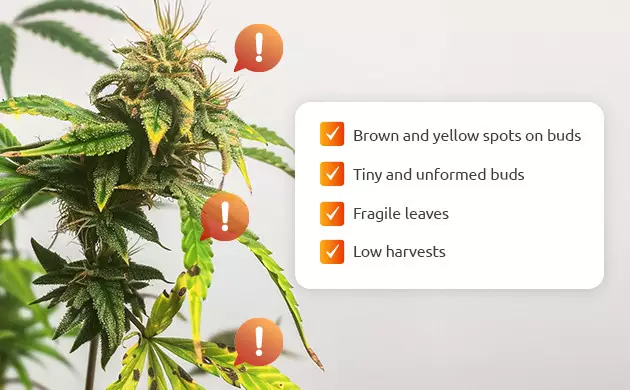
It’s natural that at the flowering stage, all the focus is on bud development. Nutrient imbalances during this period can lead to brittle leaves, brown and yellow spots on buds, small and loose buds, and lower yields in the future. To manage these issues, continue using cal-mag supplements, but be mindful of the dosage and maintain a soil pH between 6.0 and 7.0 for soil grows and 5.5 to 6.5 for hydroponics.
When and Why to Stop Using Cal-Mag During Flowering
It’s important to know when to taper off cal-mag supplements during the flowering stage. As plants approach the final weeks before harvest, reduce cal-mag use to prevent nutrient buildup that could affect the flavor and smoothness of the buds. Excess calcium and magnesium can result in harsh smoke and poor taste. Typically, you should start reducing cal-mag supplements 2-3 weeks before harvest, depending on plant response and nutrient buildup signs. This flushing period helps to ensure that the final product is clean and of high quality.
Compatibility of Cal-Mag with Other Nutrients
To prevent nutrient deficiencies and imbalances, ensure that the cal-mag you add is compatible with other nutrients. Always add your cal-mag first, then your other vegging nutrients. Keep in mind that calcium and magnesium can compete with other cations, such as potassium and iron. Also, be sure to always check the ppm levels of the solution because cal-mag adds a lot, and adjust the feeding schedule and the ratio of nutrients depending on the needs of the plants and their growth stages.
Symptoms of Cal-Mag Overuse
The excessive use of cal-mag additives in cannabis cultivation can have some harmful effects on the plant’s health and yield. These effects include nutrient deficiencies when an excess of Ca and Mg prevents the absorption of essential micronutrients such as potassium and iron, and other nutrients from the soil. This imbalance can also lead to poor plant growth, leaf discoloration, or even brown spots on the edges.
Keep Your Cannabis Healthy with Cal-Mag
We hope that now you have all the necessary knowledge on how to apply calcium and magnesium properly to ensure a healthy and productive crop. Just keep monitoring the deficiency (or overuse) signs and testing your growing medium to detect and correct imbalances early.
Happy growing!
Herbies Head Shop expressly refuses to support the use, production, or supply of illegal substances. For more details read our Legal Disclaimer.
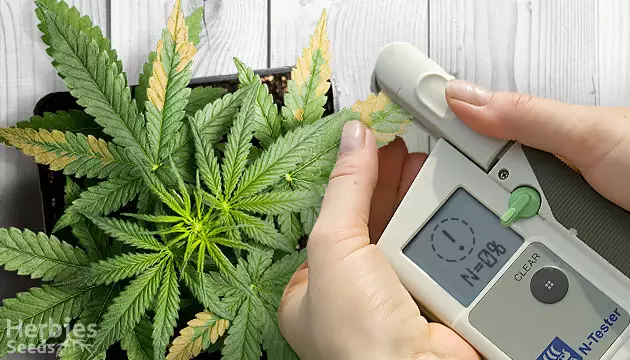
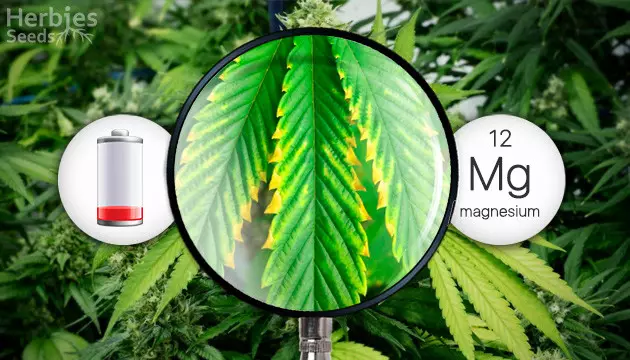
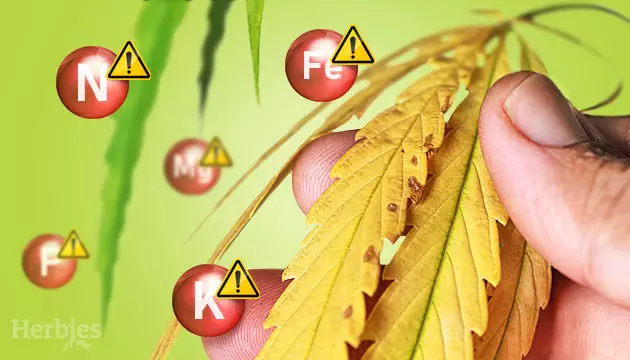



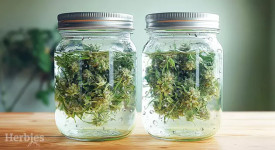
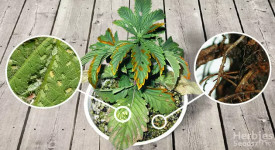



Thank you for leaving a comment for us!
Your feedback will be posted shortly after our moderator checks it.
Please note that we don’t publish reviews that: